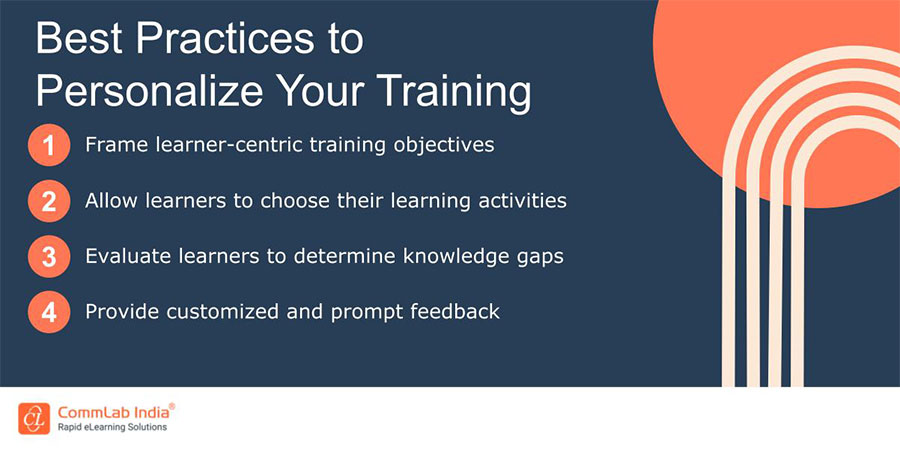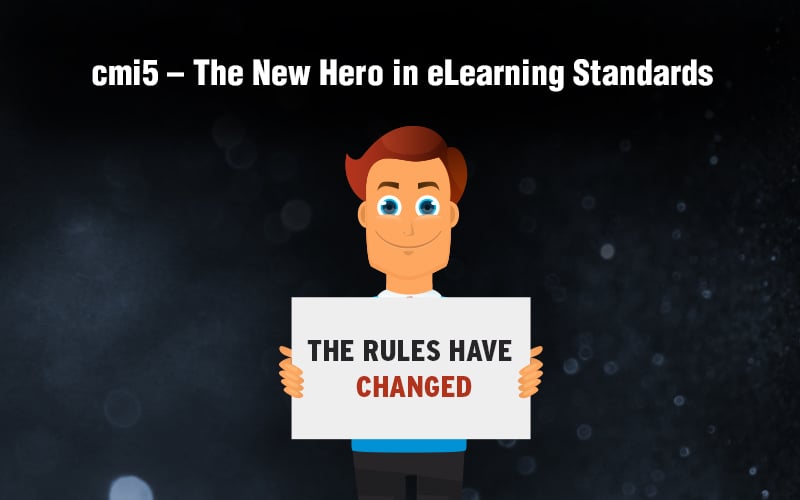How to Leverage Articulate Rise for Engaging eLearning & Microlearning [Guide]
![How to Leverage Articulate Rise for Engaging eLearning & Microlearning [Guide] How to Leverage Articulate Rise for Engaging eLearning & Microlearning [Guide]](https://blog.commlabindia.com/hubfs/blogs/articulate-rise-design-interactive-assessments.jpg)
In the realm of eLearning, assessments are more than just checkpoints – they're opportunities to engage learners, reinforce knowledge, and personalize the learning experience. And with Articulate Rise, crafting interactive assessments that captivate your learners is easier than ever. This blog will equip you with the tools and strategies to design engaging digital learning experiences that are not only informative but also enjoyable, memorable, and impactful.
→ Download eBook: Where Does Microlearning Fit in Your Learning Strategy?
Table of Contents
- What is Articulate Rise?
- What are the Common eLearning Challenges Solved with Articulate Rise?
- Why Choose Articulate Rise for Interactive Assessments?
- How Articulate Rise’s Features Enhance Microlearning Design?
- Why is Articulate Rise the Go-To Authoring Tool for Microlearning Design?
What is Articulate Rise 360?
Imagine an eLearning authoring tool that's as intuitive as drag-and-drop, responsive as your smartphone, and beautiful enough to rival your favorite magazine layout. That's Articulate Rise in a nutshell! This cloud-based platform empowers you to whip up stunning interactive courses in minutes, without wrestling with complex software or sacrificing mobile learning experiences.
Think engaging quizzes with branching scenarios, immersive hotspot activities, and even drag-and-drop timelines that bring history to life. Articulate Rise removes the tech hurdles, letting you focus on what matters most: crafting impactful online learning experiences. In short, it is your gateway to creating mobile-first courses that captivate, train, and inspire.
Let us now see how Articulate Rise solves traditional training challenges:
Articulate Rise Solves Many Traditional eLearning Challenges
Here are a few:
- Rolling out multi-device learning
- Scaling eLearning development
- Supporting reusability across courses
- Hosting courses on a xAPI-compliant LMS
- Publishing courses on the web
- Downloading courses for offline viewing
- Facilitating easy translations
What are the Common eLearning Challenges Solved with Articulate Rise?
1. Rollout Multi-Device Accessible Learning
One major challenge in eLearning is rolling out courses that can be accessed across multiple devices and browsers, allowing learners to learn at their own time, pace, and location. Articulate Rise 360 is an excellent choice to achieve this objective. Why?
There was a time when eLearning developers had to create different versions of the same eLearning course for each device being used to access the course. But with the introduction of responsive learning, creating just one version of the course is enough.
- Rise offers developers a preview of desktop, tablet (portrait and landscape), and mobile (portrait and landscape) versions of the course.
- Unlike other responsive authoring tools which take a lot of time and effort to tweak the placement of elements in slide-based courses, Articulate Rise offers a website-style layout and not a slide-based layout. This eliminates the need for manual tweaking, making Rise 360 a truly responsive tool.
2. Scale up eLearning Development
Another common challenge is the need to deliver eLearning courses quickly. With tight training budgets, it’s crucial to find cost-effective solutions without sacrificing quality.
Rapid eLearning is the perfect solution when you’re looking to deliver training at the speed of need. With the ease of use Articulate Rise offers, it’s easy to scale up eLearning to meet your organization’s growing training demands. Customizable templates in Articulate Rise can be used to quickly build engaging courses.

Where Does Microlearning Fit in Your Learning Strategy?
Uncover the Secrets to Crafting High-performing Micro Assets!
- What Microlearning is and What it is NOT?
- Types of Microlearning Assets
- Tips and Tools for Rapid Microlearning Development
- And More!

If you’re looking to complete a curriculum of rapid eLearning courses quickly with multiple eLearning developers working simultaneously for faster project completion, consider investing in Articulate 360 Teams.
‘Teams’ allows multiple eLearning developers to create and edit courses. If you’re worried that involving multiple people will create a problem with version control, relax! Changes happen in real time, ensuring everyone works on the latest version.
3. Support Reusability Across Courses
Reusing specific videos, images, and content from one course to another is a common requirement. Articulate Rise 360 makes it easier to reuse content. You can copy entire lessons to another course if you wish. The authoring tool also offers the option to create blocks (components that include text and media to create unique courses) that can be saved as Block Templates for reuse in other courses.
With a tool that supports reusability, your eLearning development costs will come down automatically!
4. Host Courses on an xAPI-compliant LMS
Many organizations require hosting eLearning courses on an xAPI-compliant learning management system (LMS).
Rise 360 supports LMS standards such as xAPI, SCORM, and AICC. All that’s required of an LMS administrator is to go to the Export settings of the course and choose xAPI from the LMS dropdown list of options. (xAPI is also known as Tin Can).
5. Publish Courses on the Web, Instead of an LMS
Sometimes, access to the LMS is restricted for non-employees, yet there is a need to rollout training programs to customers or other external stakeholders.
Articulate Rise 360 is equipped to meet such challenges. From the Export Type, the LMS admin has to choose Web instead of the LMS option and click Export to get a zip package containing the course files. The extracted zip files can be shared on a web server and the link shared with customers who need to take the course.
The only drawback of not publishing to an LMS is that courses can’t be tracked, and learners can’t resume courses from where they stopped.
6. Download Courses for Offline Viewing
Some learners are often on the move, sometimes to locations with limited Internet access. Rise 360 courses can be downloaded as a web package and learners can access the index.html file to view the course. Browsers such as Google Chrome, Safari, and Firefox support offline viewing of Rise courses, while Microsoft Edge and Internet Explorer block Rise 360 courses from playing.
7. Facilitate Easy Translations
After developing the English version of a course, it might be necessary to translate it into multiple languages. Rise 360 allows eLearning translations into all left-to-right languages and those that use double byte character sets (Chinese, Japanese). It does not currently support translations into right-to-left languages such as Arabic, Persian, and Hebrew.
One challenge that can crop up is when you want videos from the original course included in the translated versions of the course. Rise offers a workaround with its closed-caption support for videos. For instance, if you would like to include a video from the original English version of the course in the French version as well, you can have closed-caption text in French to translate the content of the video.
How to Create Rapid eLearning with Articulate Rise and Storyline 360?
Apart from solving eLearning challenges, Articulate rise also acts as an excellent tool for designing interactive eLearning assessments.
Why Choose Articulate Rise for Interactive Assessments?
Traditional eLearning assessments, often filled with dry multiple-choice questions, can leave learners feeling uninspired and disengaged. But with Rise, you can ditch the dullness and inject interactivity into your assessments. This translates to numerous benefits:
- Increased engagement: Interactive elements like drag-and-drops, hotspots, and branching scenarios draw learners deeper into the learning process, promoting active participation and knowledge retention. Here are a few strategies you can utilize to enhance learner engagement.

- Boosted knowledge application: Rise's interactive formats encourage learners to apply their newly acquired knowledge to real-world situations, building critical thinking and problem-solving skills.
- Enhanced feedback: Immediate feedback and personalized guidance provided through interactive assessments help learners identify their strengths and weaknesses, empowering them to take ownership of their learning journey.
- Mobile-friendly learning: Rise assessments are fully responsive, ensuring a seamless learning experience on any device, and fostering mobile accessibility and flexibility. Additionally, recent updates have introduced various microlearning features to help businesses create engaging training nuggets quickly.

Where Does Microlearning Fit in Your Learning Strategy?
Uncover the Secrets to Crafting High-performing Micro Assets!
- What Microlearning is and What it is NOT?
- Types of Microlearning Assets
- Tips and Tools for Rapid Microlearning Development
- And More!
Articulate Rise's Interactive Arsenal: Your Assessment Allies
Rise offers a diverse array of interactive blocks specifically designed to boost assessment engagement. Let's explore some of these powerful tools:
- Quiz: The classic quiz block offers various question formats like multiple choice, true/false, matching, and even fill-in-the-blanks, allowing you to assess knowledge recall and comprehension.
- Drag & Drop: Arrange elements, categorize information, or sequence events with the drag-and-drop block, encouraging learners to actively engage with the assessment content.
- Hotspot: Create interactive images or diagrams where learners can click on specific areas to reveal information, assess understanding of complex concepts, or stimulate visual learning.
- Scenario: Immerse learners in realistic situations and present them with choices to make. Branching scenarios offer personalized feedback based on their decisions, fostering critical thinking and decision-making skills.
- Timeline: Arrange events or stages of a process chronologically, enabling learners to visualize and understand concepts related to time and sequence.
Designing Dynamic Assessments: Strategic Tips
Beyond choosing the right block, effective assessment design hinges on clear objectives and strategic implementation. Here are some tips to keep in mind:
- Align with learning outcomes: Craft assessments that directly measure the learning objectives outlined in your course. This ensures learners understand what they are expected to know and apply.
- Variety is key: Don't stick to one question format! Integrate different interactive blocks to keep learners engaged and challenge them in various ways.
- Balance difficulty: Strike a balance between challenging and achievable questions. Frustratingly difficult assessments can disengage learners, while overly easy ones offer little learning value.
- Embrace feedback: Provide immediate and meaningful feedback after each question or activity. Offer explanations for incorrect answers and guidance for improvement.
- Personalize the experience: Utilize branching scenarios and adaptive learning principles to tailor the assessment to individual learner needs and performance. Here are a few best practices to personalize your training.

Rise Beyond the Basics: Advanced Assessment Techniques
To truly push the boundaries of interactivity, Rise offers some advanced features that can take your assessments to the next level:
- Gamification: Use points, badges, and leaderboards to turn the assessment into a game, incentivizing participation and healthy competition among learners. Watch this short video to learn more about how you can take your training experience to the next level.
- Custom branching scenarios: Design intricate branching scenarios with multiple decision points and personalized feedback pathways, creating a truly immersive and dynamic learning experience.
- Embedded content: Add external resources like YouTube videos or interactive simulations to enrich your assessments and provide diverse learning opportunities.
Now that we've explored the numerous advantages of Articulate Rise 360 for traditional eLearning and interactive assessments, let's delve into another powerful application: microlearning design.

Where Does Microlearning Fit in Your Learning Strategy?
Uncover the Secrets to Crafting High-performing Micro Assets!
- What Microlearning is and What it is NOT?
- Types of Microlearning Assets
- Tips and Tools for Rapid Microlearning Development
- And More!
How Articulate Rise’s Features Enhance Microlearning Design?
Microlearning is a modern training approach that breaks down information into small, easily digestible chunks, making it ideal for today's busy learners who need quick, focused bursts of learning.
Here's how to make the most of Articulate Rise’s features to create compelling microlearning experiences.
- Leverage Modular Design: Articulate Rise 360’s block-based structure is perfect for microlearning. By designing your course in modular sections, you can create standalone lessons that learners can complete in a few minutes. Each block can focus on a specific concept or skill, making the content more manageable and less overwhelming.
- Utilize Interactive Blocks: Engagement is key in microlearning. Use interactive blocks such as quizzes, drag-and-drops, and branching scenarios to make learning interactive and memorable. These features not only enhance engagement but also help reinforce the content by allowing learners to apply their knowledge immediately.
- Incorporate Multimedia Elements: Microlearning benefits from the inclusion of multimedia elements like videos, audio clips, and images. Articulate Rise 360 allows you to seamlessly integrate these elements into your lessons, catering to different learning styles and making the content more dynamic and engaging.
- Enable Mobile Learning: One of the strengths of Articulate Rise 360 is its responsive design, ensuring your bite-sized training content is accessible on any device. This flexibility allows learners to access training materials on the go, fitting learning into their busy schedules.
- Focus on Specific Learning Objectives: Each microlearning module should have a clear, specific objective. This focus ensures that each lesson is concise and targeted, making it easier for learners to grasp and retain the information.
By leveraging these features, you can create effective microlearning experiences that are engaging, accessible, and perfectly suited for the fast-paced needs of modern learners.
Why is Articulate Rise the Go-To Authoring Tool for Microlearning Design?
Wrapping Up
Incorporating interactive assessments into your eLearning strategy is a game-changer. Articulate Rise 360 not only simplifies the creation of these assessments but also ensures they are engaging, responsive, and effective in enhancing the learning experience. By leveraging its diverse interactive blocks, from quizzes to branching scenarios, you can create assessments that not only test knowledge but also promote deeper understanding and critical thinking.
The versatility of Articulate Rise 360 addresses common eLearning challenges, such as multi-device accessibility, rapid development, content reusability, and seamless integration with LMSs. Its ability to facilitate offline viewing and translations further extends its usability, making it a comprehensive tool for modern eLearning needs. Additionally, its support for microlearning allows you to deliver bite-sized, focused content that enhances retention and fits seamlessly into busy schedules.
Curious about where microlearning fits into your learning strategy? Discover the secrets to crafting high-performing micro assets that engage and educate! Dive into our comprehensive guide and unlock the potential of microlearning to enhance retention and fit seamlessly into busy schedules.
Editor’s note: This post was originally published on February 06, 2024 and has been updated for comprehensiveness.






